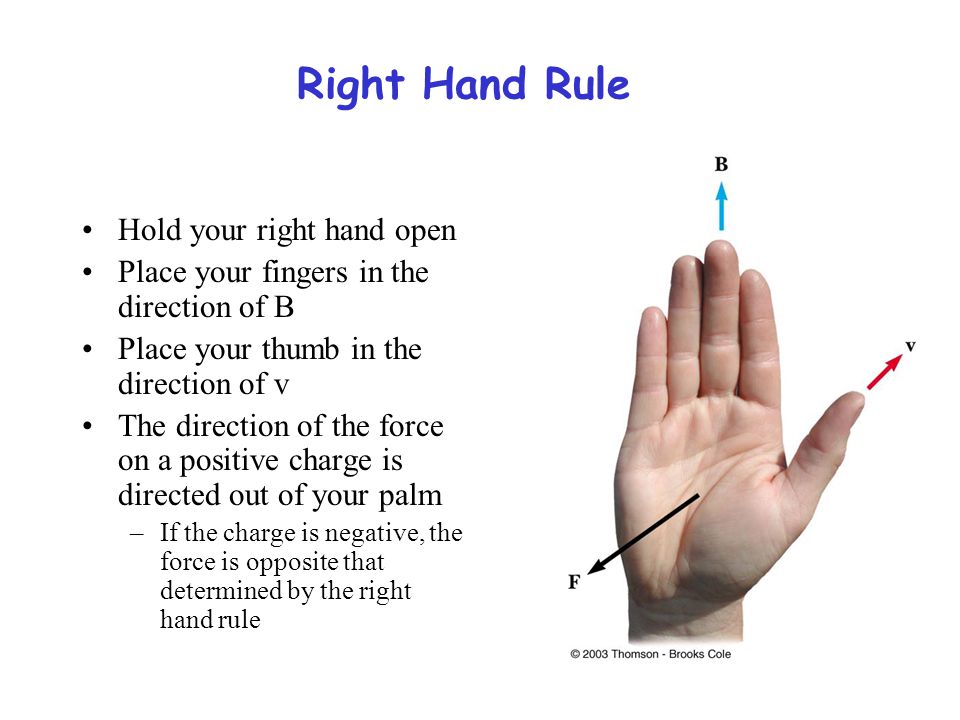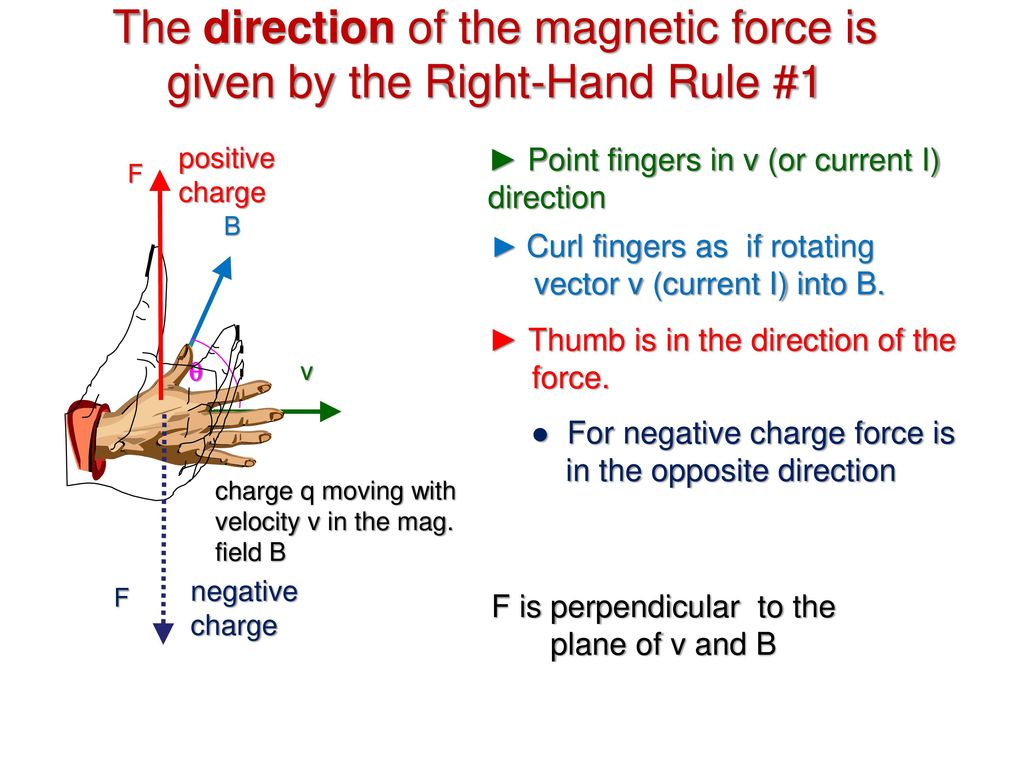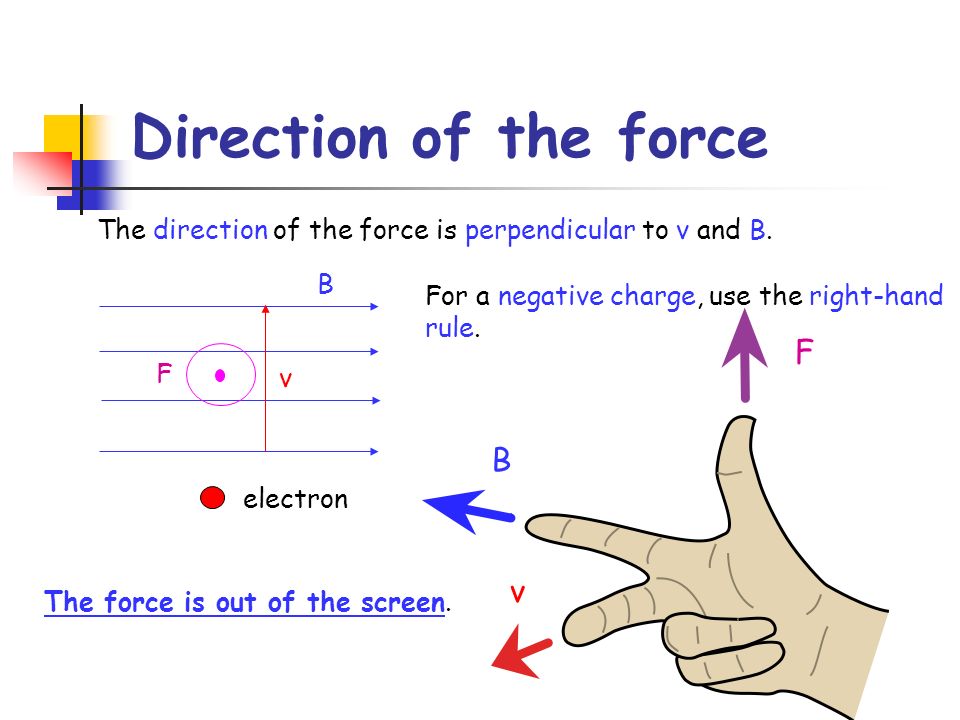When using the right hand rules it is important to remember that the rules assume charges move in a conventional current the hypthetical flow of positive charges.
Negative electric charge right hand rule.
Yhe right hand rule is for a positive charge moving through an electric field.
To predict the behavior of positive charges use your right hand.
Practice quiz 1 chapter 19 problem 2 positive negative and neutral charge particle in a magnetic field.
Theoretically an electric dipole is defined by the first order term of the.
If your thumb points in the direction of the velocity and your fingers point in the direction of the magnetic field your palm points in the direction of the force.
If the curl of the right fingers represents a rotation from the direction the charge is moving to the direction of the magnetic field then the force is in the direction of.
If a positive electric charge moves across a magnetic field it experiences a force according lorentz force with the direction given by the right hand rule.
If your teacher specifies that the electrical current is negative then use the left hand rule it s like the right hand rule but flipped.
To predict the behavior of negative charges use your left hand.
The diagrams above are two of the forms used to visualize the force on a moving positive charge.
In order to apply either right hand rule to a moving negative charge the velocity v of that charge must be reversed to represent the analogous conventional current.
The electric dipole moment is a measure of the separation of positive and negative electrical charges within a system that is a measure of the system s overall polarity the si units for electric dipole moment are coulomb meter c m.
Some would claim that there is only one right hand rule but i have found the convention of three separate rules for the most common situations to be very convenient.
Direction of angular velocity ω and angular momentum l in which the thumb of your right hand points when you curl your fingers in the direction of rotation.
These are for 1 long straight wires 2 free moving charges in magnetic fields and 3 the solenoid rule which are loops of current.
The right hand rule was one of the outdated things we kept using.
The direction of the force f on a negative charge is in the opposite sense to that above so pointed away from the back of your hand.
The right hand rule is a way to predict the direction of a force in a magnetic field.
Calling these rules is the right name.
However a commonly used unit in atomic physics and chemistry is the debye d.
If you point your thumb in the direction of the current as shown and let your fingers assume a curved position the magnetic field circling around those wires flows in the direction in which your four fingers point.

















